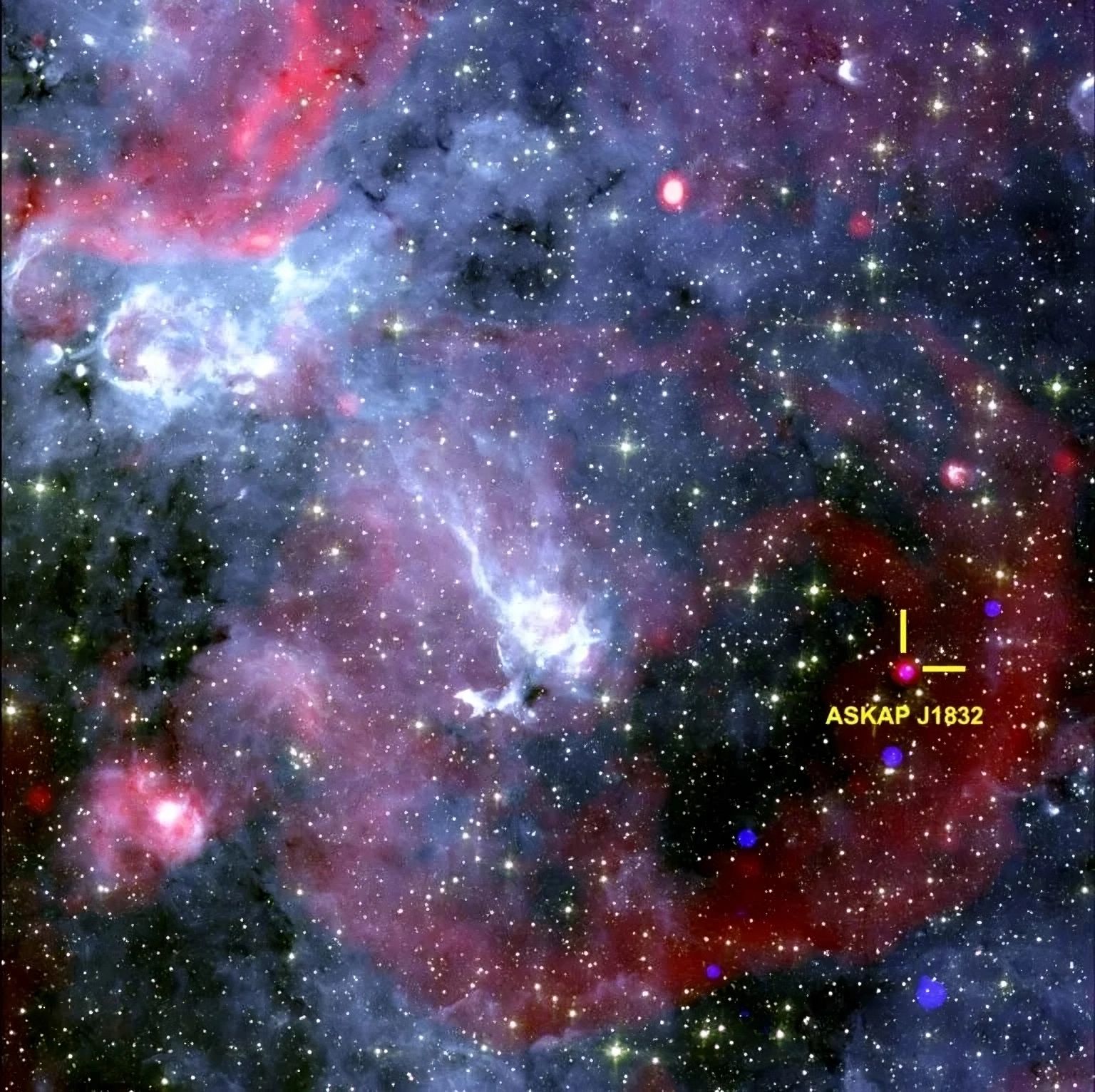Follow us on Google News (click on ☆)
The object, named ASKAP J1832-0911, was detected by the Australian ASKAP radio telescope and NASA's Chandra Observatory. It emits bursts of radio waves and X-rays for two minutes, every 44 minutes. This regular pattern and duration are unprecedented in astrophysics.

Image of the sky region surrounding ASKAP J1832-0911.
Credit: Ziteng (Andy) Wang, ICRAR
Current theories struggle to explain the origin of these signals. Researchers suggest the possibility of a magnetar or a binary system involving a highly magnetized white dwarf. However, these hypotheses do not fully account for all the observations made.
ASKAP J1832-0911 belongs to the class of long-period transients, extremely rare astrophysical events. Unlike classical pulsars, these objects emit pulses at intervals of minutes or hours, challenging current models of stellar physics.
The simultaneous detection of radio and X-ray emissions by Chandra provides a valuable clue to understanding this phenomenon. Astronomers emphasize the importance of continuing observations with pairs of radio and X-ray telescopes to unravel this mystery.
This discovery could lead to revising our understanding of stellar evolution or even the emergence of new physical models. Researchers estimate that other similar objects may exist, waiting to be detected.
What is a magnetar?
A magnetar is a neutron star with an extremely powerful magnetic field, billions of times stronger than Earth's. These objects are remnants of massive stars that exploded in supernovae.
Magnetars occasionally emit bursts of X-rays and gamma rays, resulting from the energy released by their magnetic field. These emissions can be detected at vast distances across the Universe.
Despite their power, magnetars are relatively rare. Studying them helps scientists better understand the extreme conditions in the Universe and the associated physical processes.
The discovery of ASKAP J1832-0911 could add a new piece to the puzzle of understanding these objects.